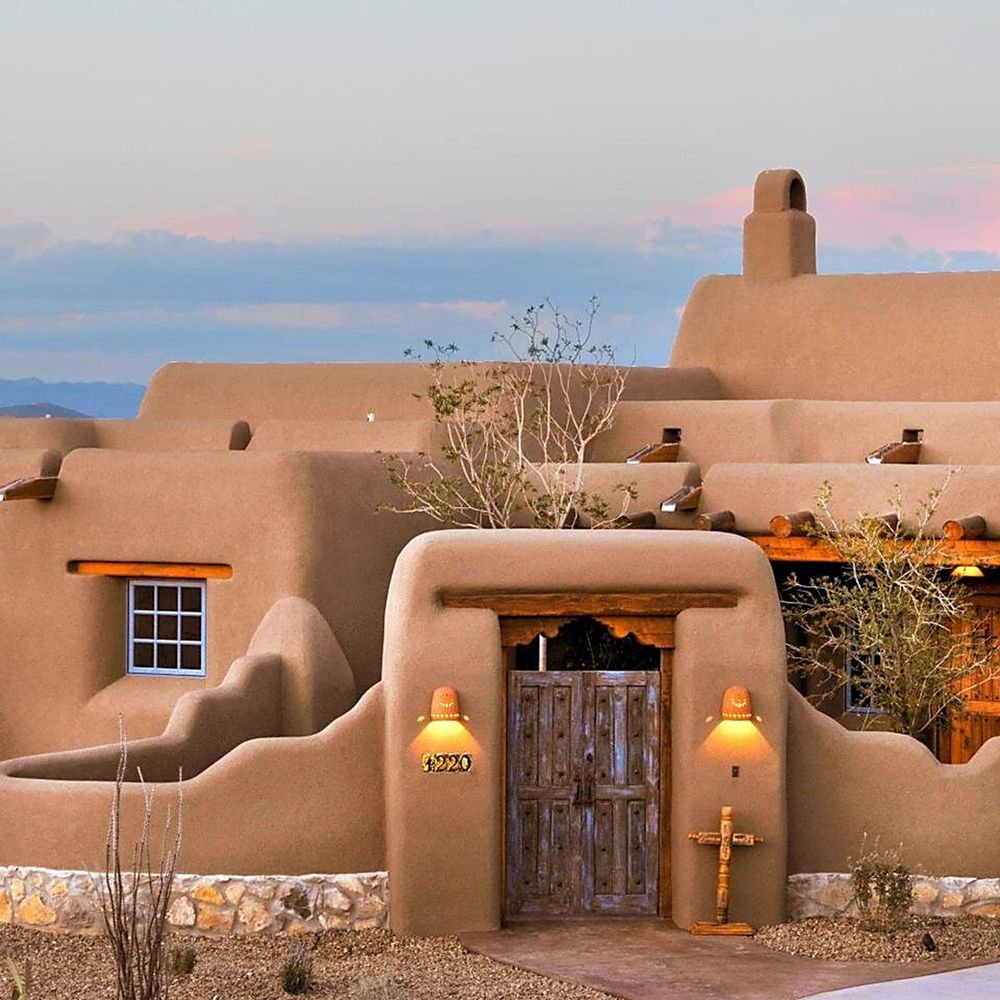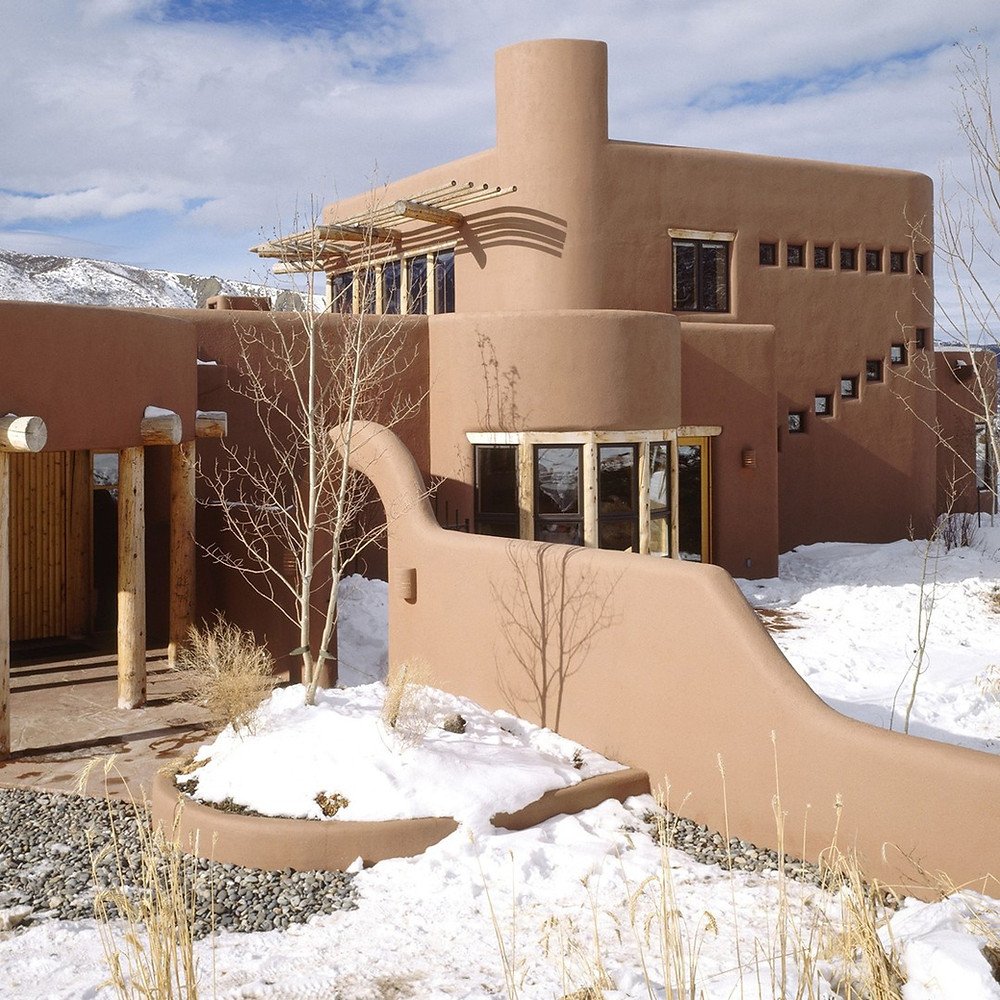How many adobe bricks does it take to build a house?
A crew of 3 able bodies can produce around 600 bricks in a given 8-hour day. This same crew can lay approximately 250 bricks into a wall per day. This same house with a simple floor plan would use around 3600 adobe bricks.
How thick are adobe walls?
Worldwide use of adobe is mainly in rural areas, where houses are typically one story, 3 m high, with wall thicknesses ranging from 0.25 m to 0.80 m. In mountainous regions with steep hillsides, such as the Andes, houses can be up to three stories high.
What is an example of adobe construction?
- San Francisco De Asis Mission Church; Ranchos De Taos.
- El Santuario de Chimayo; Chimayo.
- The Oldest House; Santa Fe.
- Taos Pueblo; Taos.
- Palace of the Governors; Santa Fe.
- Kit Carson Home; Taos.
- Old San Miguel Mission; Socorro.
- The Mission San Esteban del Rey; Acoma Pueblo.
What are the uses of adobe in construction?
Uses of Adobe in Construction
Walls: Adobe is frequently used to construct walls, as it is an affordable and durable material. Roofs: Adobe is often used to build roofs, as it provides excellent insulation against heat and cold. Paving: Adobe can be used to pave pathways or roads due to its strength and durability.What is the construction technique of adobe?
- Build your foundation. Adobe houses usually don't have basements.
- Lay the bricks with mortar.
- Stack bricks together to make thick walls—10 inches (25.4 centimeters) or more—for strength.
- Leave openings for doors and windows.
- Choose a roof.
- Select a coating.
Adobe construction meets additive manufacturing. Applying new tools to longstanding materials and design, @MarioCucinella and @3dwasp are 3D-printing futuristic-looking domed houses made from "technology and clay." (via @adele_peters) https://t.co/6Ombq2EZHA
— The Team at X (@Theteamatx) June 1, 2021
What are some disadvantages of adobe homes?
Cons of an adobe house
Don't work in cold climates: The adobe structure is not particularly suited for colder climates. Adobe walls don't insulate the homes as well compared to hot climates. Harder to find: Adobe houses are concentrated in areas like New Mexico, Arizona, California, Texas, and sometimes Florida.Frequently Asked Questions
What are the uses of adobe in building?
The small Adobe units provide great flexibility in the design and construction of earth buildings. Adobe bricks can be easily cut for fitting and can be provided with holes for reinforcing and services. Many people find the pattern and texture of Adobe walls very attractive.
Why do you think adobe is still used today in construction?
Its popularity is due to its availability and affordability as well as its durability in hot, dry climates. Adobe clay has been used as a building material since ancient times and it is still widely used today due to its durability and insulation properties.
Where did this style adobe mainly originate?
History of adobe homes. While typically spotted throughout the Southwestern United States, adobe architecture dates back to nearly 8300 BC in the Middle East. Popular in dry and arid regions, ancient builders used mixtures of sand, straw, and clay to create building materials.
Did the Spanish use adobe for building?
What Native American tribe used adobe houses?
Pueblo peoples
Adobe is mud and straw mixed together and dried to make a strong brick-like material. Pueblo peoples stacked these bricks to make the walls of the house.
Which native Texans built their house out of adobe?
Mexican Americans used the adobe technology introduced by the Pueblo Indians in New Mexico and the Jumano and Apache Indians in Texas, as well as their Spanish and Mexican forebears, to construct family dwellings.
FAQ
- Which culture group of Texas made their home of adobe?
The areas that are now West Texas and Southwest Texas were home to peoples of the Puebloan culture. The Puebloan culture was marked by settling village life with homes made of adobe, a mix of sun-dried earth and straw.
- Which culture used adobe brick to build their homes?
Puebloan peoples
Adobe had been in use by indigenous peoples of the Americas in the Southwestern United States, Mesoamerica, and the Andes for several thousand years. Puebloan peoples built their adobe structures with handsful or basketsful of adobe, until the Spanish introduced them to making bricks.
- Which native culture group built homes using adobe bricks that looked like apartments?
- Hopi people lived in adobe houses, which are multi-story house complexes made of adobe (clay and straw baked into hard bricks) and stone. Each adobe unit was home to one family, like a modern apartment. Hopi people used ladders to reach the upstairs apartments.
- How does adobe construction work?
Adobe bricks (mud bricks) are made of earth with a fairly high clay content and straw. If produced manually the earth mix is cast in open moulds onto the ground and then left to dry out. Adobe bricks are only sun-dried, not kiln-fired. When used for construction they are laid up into a wall using an earth mortar.
- What are the disadvantages of adobe construction?
But other than that (something that can be remedied), we found that other cons could include the fact that adobe construction needs dry, temperate weather (wet or freezing conditions are not conducive to putting up a mud-brick house) and that sometimes critters can burrow through the bricks and weaken walls (something
What is adobe construction
| What happens to adobe bricks when it rains? | This is probably the most common question. The answer is no. A well-designed mix resists degradation and will remain durable for centuries. |
| How thick are adobe block walls? | Worldwide use of adobe is mainly in rural areas, where houses are typically one story, 3 m high, with wall thicknesses ranging from 0.25 m to 0.80 m. In mountainous regions with steep hillsides, such as the Andes, houses can be up to three stories high. |
| What are the advantages of adobe bricks? | Building with adobe bricks can offer many advantages, such as cost-effectiveness, environmental sustainability, safety, and comfort. These bricks are low-cost and easy to make, as well as natural and biodegradable. Additionally, they are fire-resistant and pest-resistant, thus providing protection. |
| What is the difference between adobe bricks and regular bricks? | The difference between adobe and brick is that adobe is sun-dried, whereas a brick is kiln fired at a very high temperature. When this happens, the clay changes and will not soften again if the brick gets wet. |
| What does adobe brick do? | As with other forms of earth construction, adobe bricks are a fireproof, durable yet biodegradable, non-toxic building material which provide sufficient thermal mass to buildings to ensure excellent thermal performance. |
- What are the disadvantages of adobe blocks?
The mechanical parameters prove a disadvantage of adobe blocks: their low resistance. Even so, the results with the use of adobe improve the strength of the material, due to the solidification of the adobe structure.
- How long does it take to build an adobe?
The adobe brick walls of an average size home at around 2000 square feet (or 185 square meters) can be constructed within one month by a skilled 3-person team. A crew of 3 able bodies can produce around 600 bricks in a given 8-hour day. This same crew can lay approximately 250 bricks into a wall per day.
- What was used to make adobe buildings at the missions?
Five basic materials were used in constructing the permanent mission structures: adobe, timber, stone, brick, and tile. Adobes (mud bricks) were made from a combination of earth and water, with chaff, straw, or manure added to bind the mixture together.
- What is the method of adobe construction?
- Here's the basic method for building with adobe bricks:
- Build your foundation. Adobe houses usually don't have basements.
- Lay the bricks with mortar.
- Stack bricks together to make thick walls—10 inches (25.4 centimeters) or more—for strength.
- Leave openings for doors and windows.
- Choose a roof.
- Select a coating.
- Here's the basic method for building with adobe bricks:
- When was the adobe built?
Eighth century BCE
Adobe bricks were used in Spain from the Late Bronze and Iron Ages (eighth century BCE onwards).



